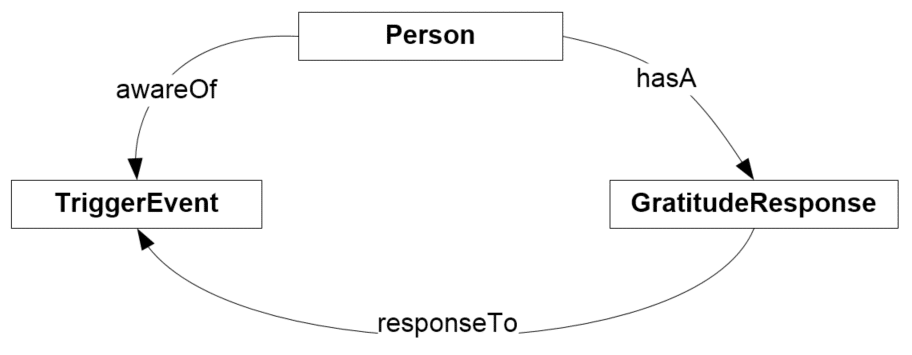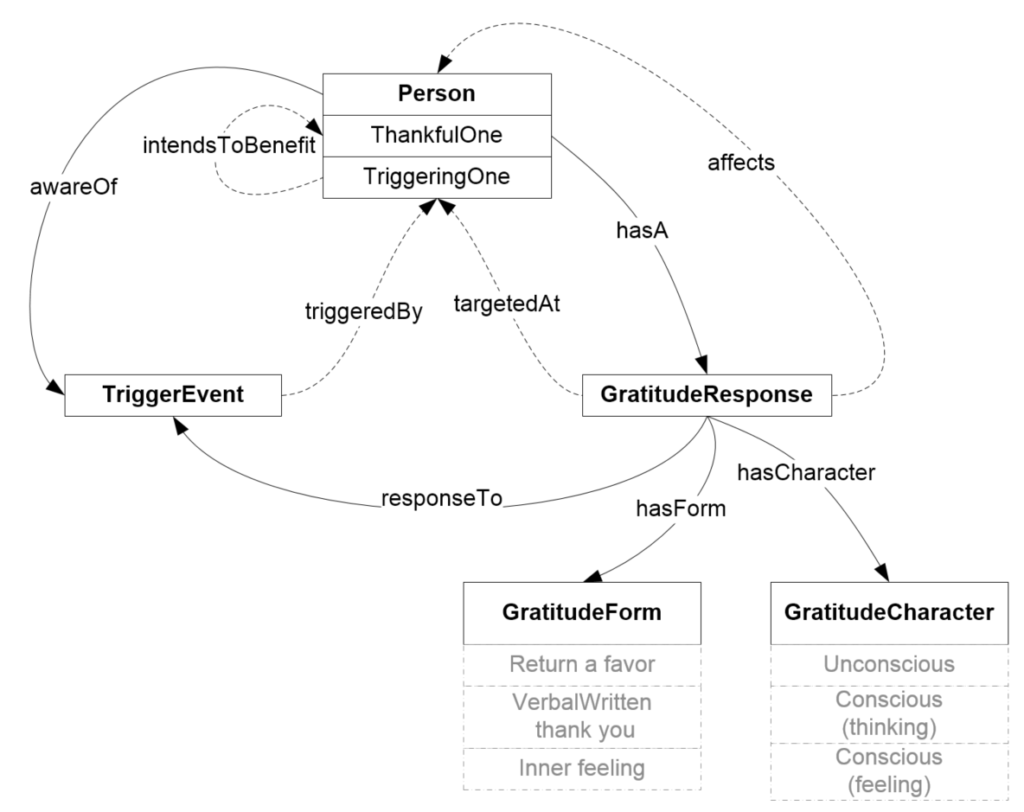I wrote the following last year, and am inspired to share this more publicly, today, the Monday of Thanksgiving week, 2014.
It is Thanksgiving Day, 2013 and I just came across an article describing how science has tied gratitude to “the tendency to feel more hopeful and optimistic about one’s own future, better coping mechanisms for dealing with adversity and stress, [and] less instances of depression” among other things.
But what exactly is gratitude? And will all forms of gratitude give a similar boost to happiness? Examples range from a simple automatic thank you when someone opens a door for you, to a profound mystical experience where one may find oneself weeping in an alpine meadow of flowers surrounded by glacier-draped peaks.
An ontological analysis that I conducted in the last hour reveals the following essential elements of gratitude.
- Person: the thankful one
- Trigger Event: An event that triggers the person’s gratitude response
- Gratitude Response: The expression of gratitude by that person in response to the event.
Here is a picture. The rectangles represent the key kind of things, the links indicate how they are related to each other. Note that the person has to be aware of the trigger event in order for them to express gratitude in response to it.

Main Elements of Gratitude
In addition, every gratitude response will have a certain form and a certain character. The character of the gratitude response might be unconscious or conscious; if the latter, it might be at a thinking level without any real feeling, or it might be deeply felt. A gratitude response will also take a certain form, e.g. returning a favor, a verbal or written thank you, or just an inner feeling.
This is what is essential, but there are various optional things too. For example, the trigger event may have been triggered by another person, or others may have had nothing to do with it (e.g. a rainbow). If the former, the triggering person may or may not have explicitly intended to benefit the thankful one. They may have just made an offhand remark that someone found value in, or written something in an article that had a great benefit to a reader who emailed a thank you. In this example, the gratitude response was targeted at the author who triggered the response, but that would not always be the case. The thankful one may have just felt deep gratitude that the author never knew about.
Then there is the question of whether the gratitude response actually affected anyone. The author might be pleased that a reader expressed gratitude, or they might not care, or they might not even see the thank you email. Even the thankful one might not be affected, if their gratitude response is fully on autopilot (e.g. thanking one for opening a door).
Below is a diagram summarizing all the points we have raised about gratitude. It is essentially an ontology of gratitude. The dotted lines indicate optional links, the solid ones are necessary.

So how can we use this ontology of gratitude to pave the road to euphoria? I speculate that the science on gratitude will show that the gratitude has to be felt to be the most valuable. On Thanksgiving, we often go around the table and say what we are thankful for. But does it really mean anything? Are we just saying it or do we really feel it?
This thanksgiving, I am thankful for my creative mind and that I have a job that pays me to do what I love: distilling the essence from a complex web of ideas. It is deeply felt. There, I feel much better already!
Happy Thanksgiving

